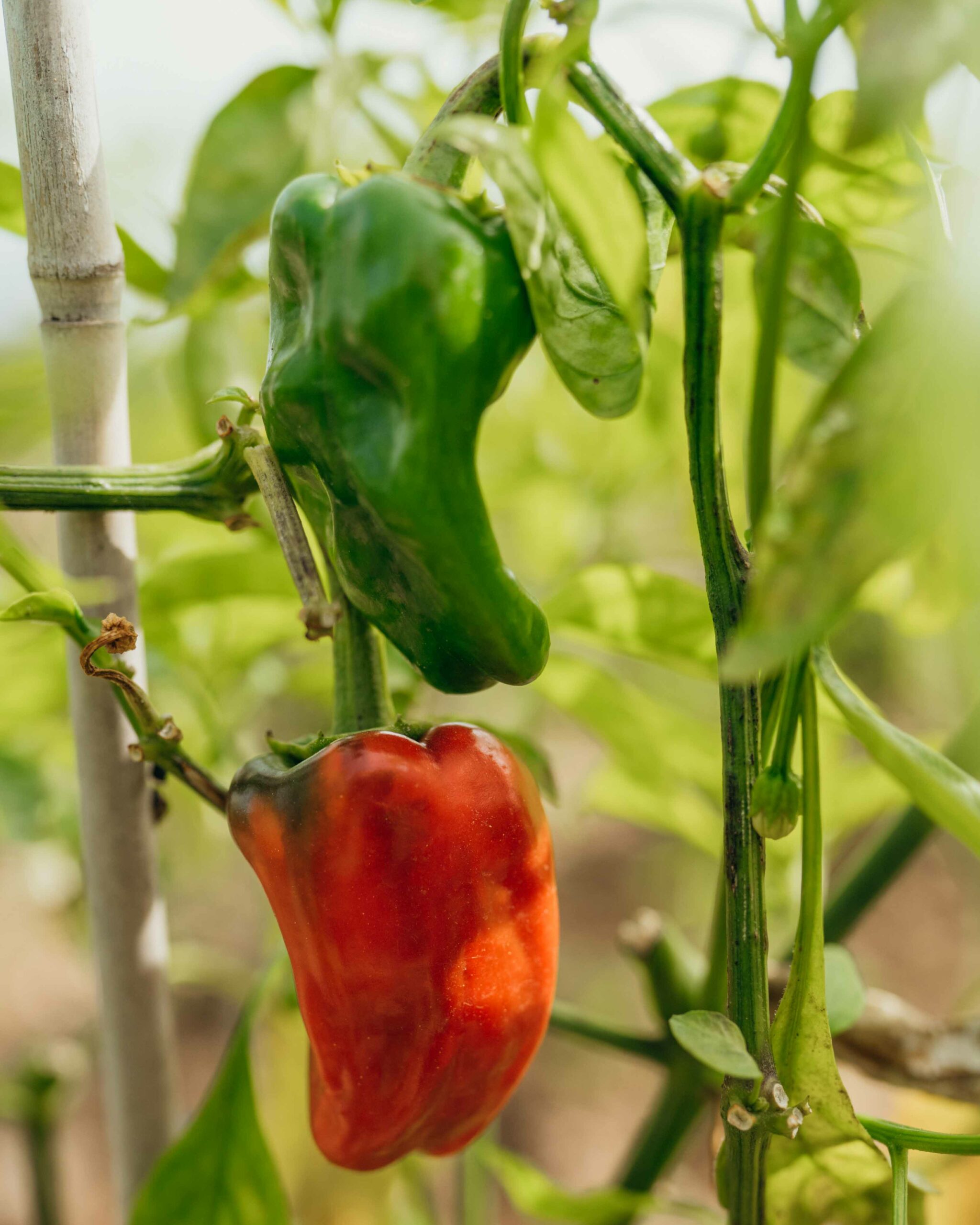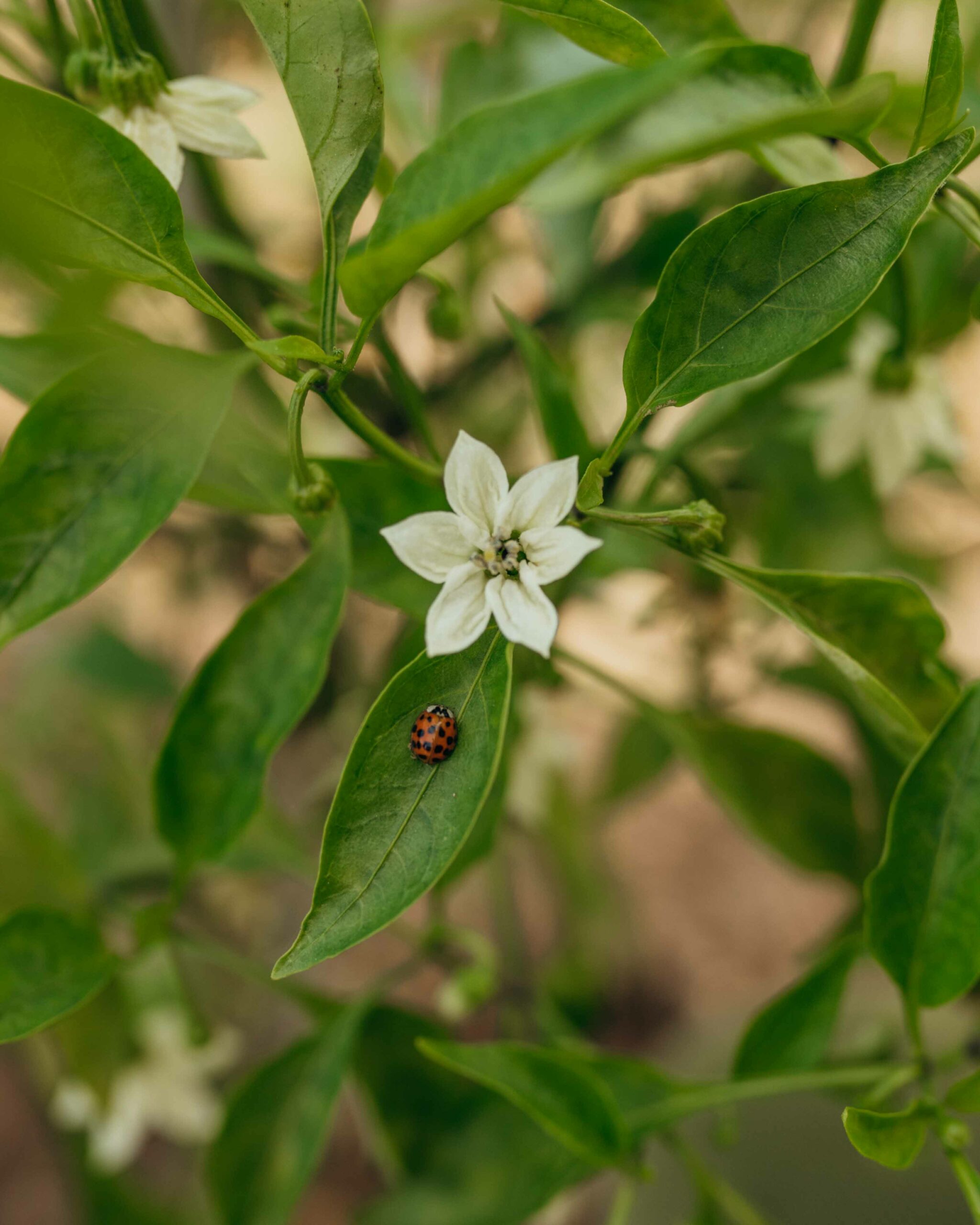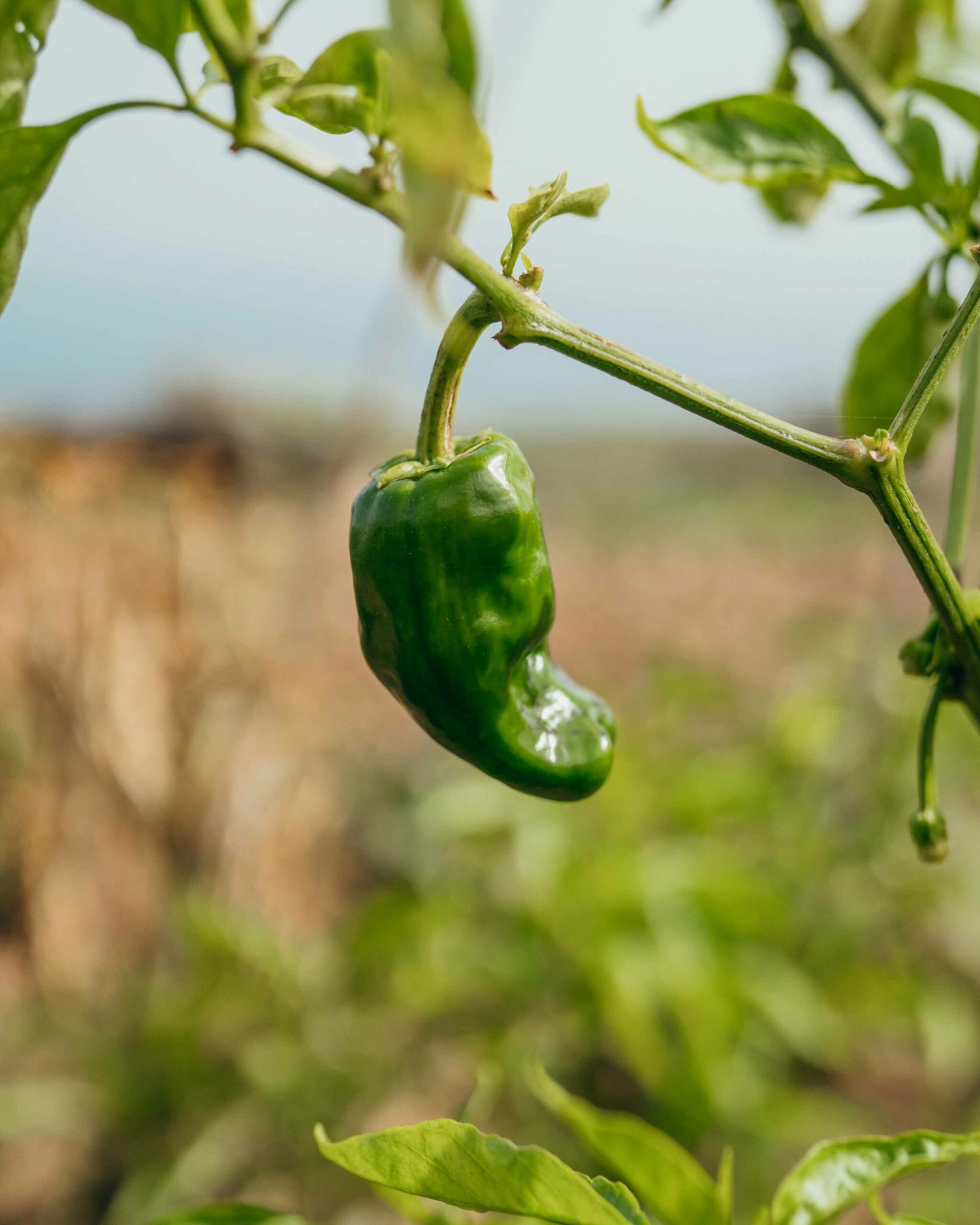Capsicum
Paprika
Englische Bezeichnung: Peppers
Spanische Bezeichnung: Pimienta
Familie
Nachtschattengewächse (Solanaceae)
Verwendbare Teile
Hauptbestandteile
-
Mineralstoffe: Kalium
-
Vitamine: B-Vitamine, Vitamin C, Folsäure, Beta-Carotin (Provitamin A)
-
Sekündäre Pflanzenstoffe: Carotinoide, Flavonoide (Quercetin), Anthocyane
Sorten auf der Finca:
– Pimienta de Padrón
– italienische Paprika
– Gelbe, rote, grüne Paprika
Ernte-Hinweise:
Paprika nur voll ausgereift ernten. Das garantiert den höchsten Vitamingehalt und bestes Aroma. Morgens oder am frühen Vormittag ernten, weil sie dann die meisten Nährstoffe haben. Die Paprika mit scharfem Messer oder Schere abschneiden, um Triebe und übrige Früchte nicht zu beschädigen.
Verwendung:
Rohkost, Kochen, Braten, Backen
-
z.B.: als Rohkost-Snack, Gemüsebeilage, in Suppen, Eintöpfen, Aufläufen, Gemüsepfannen, Pasta-Soßen,..
Heute gibt es bis zu 33 Paprika-Arten, mehr als 1.000 Sorten und rund 50.000 Varietäten! Aus den wilden Chilipflanzen wurden bereits um 5.000 v. Chr. zahlreiche Arten gezüchtet.
Paprikas können daher so klein wie eine Erbse oder so groß wie eine Aubergine sein, von ihren zahlreichen Formen, Farben und Geschmacksrichtungen einmal ganz abgesehen. So können Paprika mild, süss, herb und fruchtig schmecken oder auch extrem scharf.
Typisch für die Sorte “Pimientos de Padrón” ist der unterschiedliche Schärfegrad der einzelnen Früchte. Ein galicisches Sprichwort lautet: „Paprikas aus Padrón: einige scharf, andere nicht.“ Die Pimientos werden in Olivenoel gebraten, mit groben Meersalz (Hagelsalz) bestreut und als Entrée oder Tapa serviert.
Family
Nightshade family (Solanaceae)
Parts Used:
Pepper
Key Constituents:
-
Minerals: Potassium
-
Vitamins: B vitamins, vitamin C, folic acid, beta-carotene (provitamin A)
-
Secundary plant substances: Carotenoids, flavonoids (quercetin), anthocyanins
Harvesting Guidelines:
Harvest peppers only fully ripe. This guarantees the highest vitamin content and best flavor. Harvest in the morning or early morning, because then they have the most nutrients. Cut the peppers with a sharp knife or scissors so as not to damage shoots and remaining fruit.
Use:
Raw, cooking, frying, baking
-
e.g.: as raw snack, vegetable garnish, in soups, stews, casseroles, vegetable pans, pasta sauces,…
Today there are up to 33 pepper species, more than 1,000 varieties and around 50,000 varieties! Numerous species were already bred from the wild chili plants around 5,000 BC. Peppers can therefore be as small as a pea or as large as an eggplant, not to mention their numerous shapes, colors and flavors. Thus, peppers can taste mild, sweet, tart and fruity, or extremely spicy.
Typical of the „Pimientos de Padrón“ variety is the varying degree of spiciness of the individual fruits. A Galician saying goes, „Padrón peppers: some hot, some not.“
The pimientos are fried in olive oil, sprinkled with coarse sea salt and served as entreé or tapa.
Familia
Solanaceae
Partes aprovechables:
Pimienta
Principales Constituyentes:
-
Minerales: potasio
-
Vitaminas: Vitaminas B, vitamina C, ácido fólico, beta-caroteno (provitamina A)
Sustancias vegetales secundarias: Carotenoides, flavonoides (quercetina), antocianinas
Variedades en la Finca:
– Pimienta de Padrón
– Pimienta italiana
– Pimienta amarilla, rojo y verde
Indicaciones de Cosecha:
Coseche sólo los pimientos completamente maduros. Esto garantiza el mayor contenido de vitaminas y el mejor aroma. Recójalas por la mañana o temprano, ya que es cuando tienen más nutrientes. Cortar los pimientos con un cuchillo afilado o unas tijeras para no dañar los brotes y los frutos restantes.
Uso:
crudas, cocidas, asadas, horneadas
-
por ejemplo: ejemplo: como Snack de verduras crudas, guarnición de verduras, en sopas, guisos, cazuelas de verduras, salsas de pasta,…
Hoy en día existen hasta 33 especies de pimientos, más de 1.000 tipos y alrededor de 50.000 variedades. Alrededor del año 5.000 a.C. ya se cultivaban numerosas especies a partir de las plantas de guindillas silvestres. Así, los pimientos pueden ser tan pequeños como un guisante o tan grandes como una berenjena, por no mencionar sus numerosas formas, colores y sabores. Los pimientos pueden tener un sabor suave, dulce, agrio y afrutado, o extremadamente picante.
La variedad „Pimientos de Padrón“ se caracteriza por el diferente grado de picor de cada uno de los frutos. Un refrán gallego dice: „Pimientos de Padrón: unos pican, otros no“.
Los pimientos se fríen en aceite de oliva, se espolvorean con sal marina gruesa y se sirven como entrante o tapa.









































